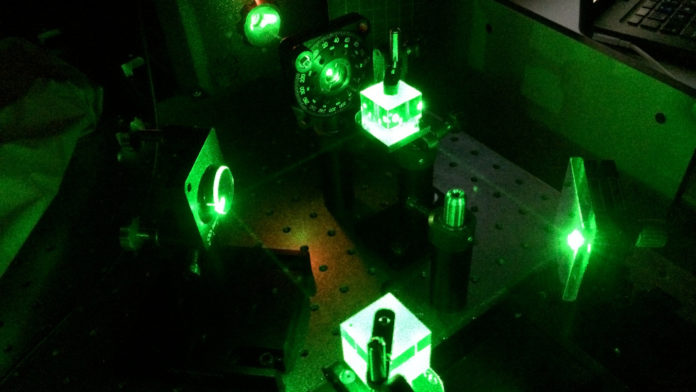Modern computers rely on circuitry to function, but a new jello-like material opens the possibility of completely light-controlled computing.
The light-responsive material was designed in a collaboration between researchers at Harvard University and McMaster University. Their study was published in PNAS.
The material is a hydrogel, which means it’s swollen with water like a sponge. The researchers tethered a light-sensitive molecule (spiropyran) to the material. When light hits it, it triggers a structural change and the material temporarily contracts. This contraction forces water out, increasing the material’s local refractive index (slows down how quickly light can travel through a material).
This change makes a channel for the light to travel through, called a waveguide. Normally beams of light broaden as they travel, but the waveguide allows a wave to maintain its focus.
When the light turns off, the material relaxes back to its initial state. The researchers found that the waveguide can rapidly and reversibly switch on and off under low power light, making it practical for use in applications like computing.
Other photosensitive materials either require intense light exposure to change their structure, or are permanently changed so that they can’t switch on and off.
But what’s most exciting is that the material and its light-controlled properties allows multiple beams to interact, even if they don’t cross paths at all. The flexibility of the entire structure of the hydrogel means that all possible paths through the matrix are interconnected; the deformation from one waveguide can influence another beam.
One beam could be used to inhibit another, or they can cancel each other out completely, or both could travel through the matrix. This creates an optical logic gate, the basic building block of any digital system.
“Materials science is changing,” said co-author Joanna Aizenberg in a press release. “Self-regulated, adaptive materials capable of optimizing their own properties in response to environment replace static, energy-inefficient, externally regulated analogs.
“Our reversibly responsive material that controls light at exceptionally small intensities is yet another demonstration of this promising technological revolution.”





































